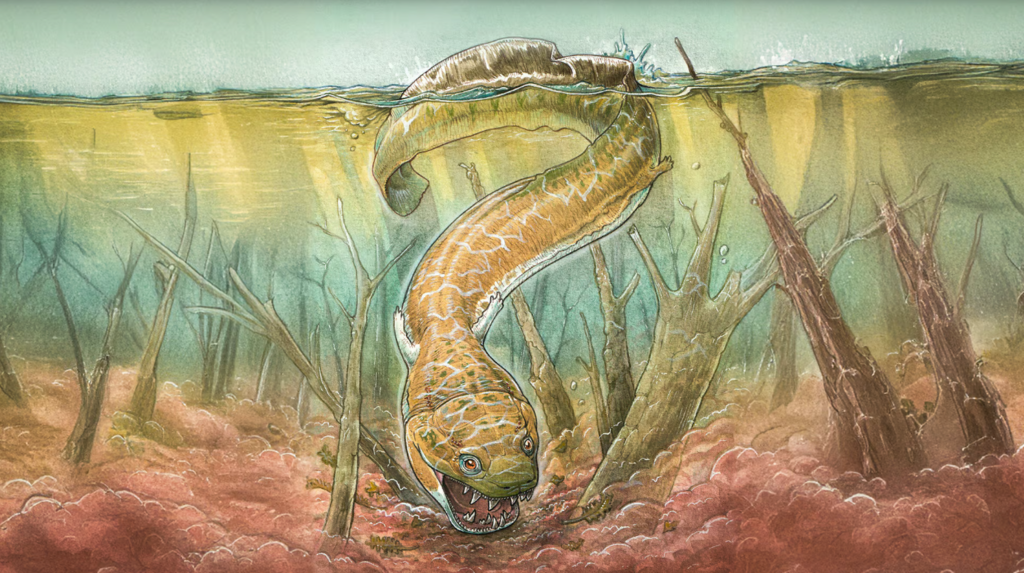Getting your Trinity Audio player ready...
Gaiasia jennyae was a massive, 2.5-meter-long (8.2 feet) salamander-like apex predator that lived around 272-280 million years ago during the early Permian period. It roamed the ancient swamps of the supercontinent Gondwana (present-day Namibia).
It had a distinctive "toilet seat-shaped" skull nearly 2 feet long, interlocking fangs, and a powerful structure capable of capturing large prey, suggesting it was an aquatic ambush predator that swam like an eel with reduced limbs.
The excavation was led by Argentine researcher Claudia Marsicano from CONICET. The excavation site in Namibia, a protected area for rhinos, is difficult to access.
The findings suggest a reevaluation of early terrestrial animal evolution globally, as tetrapods were the first vertebrates to develop digits instead of paired fins, allowing them to move on land. The appearance of amniotes marked the transition to reproduction on land, away from water dependence.
This tetrapod represents a relict lineage with anatomical similarities to much older species, traceable to the early Permian period, and was larger than other stem tetrapods found far from known habitats of similar species.
Its discovery challenges existing theories that early tetrapod evolution was closely tied to Carboniferous wetlands near the equator, as it was found in high-palaeolatitude deposits in a region with a cold-temperate climate, contrary to the tropical climate in other regions 280 million years ago.
Phylogenetic analysis suggests G. jennyae belonged to an archaic group of vertebrates that eventually gave rise to amphibians, reptiles, birds, and mammals, and was a sister taxon to the Carboniferous Colosteidae from Euramerica, indicating a global distribution of tetrapods during the Carboniferous-Permian transition.
This article was written in collaboration with Generative AI news company Alchemiq
Sources: PBS, CBS News, The Guardian, Nature, The New York Times, Popular Science, The Independent, Live Science, Der Spiegel, Discover Magazine, New Scientist, El Mundo, La Voz, Gazeta.ru, Infobae, TiempoSur, Süddeutsche Zeitung, Yahoo, La Nación, Rambler.


